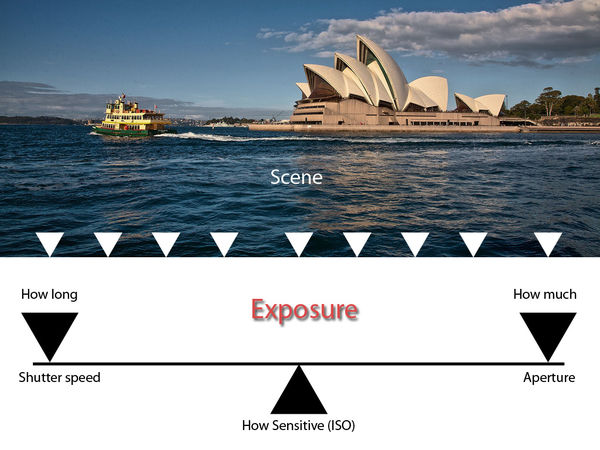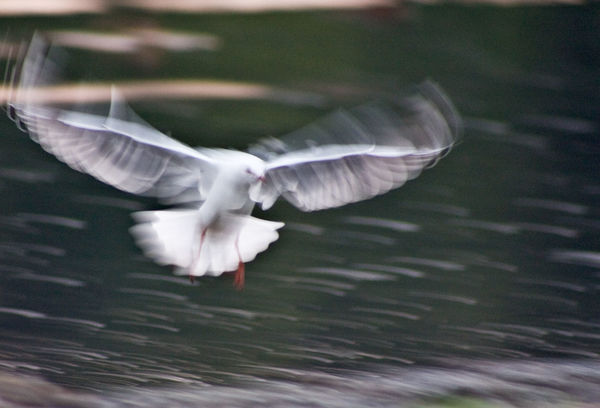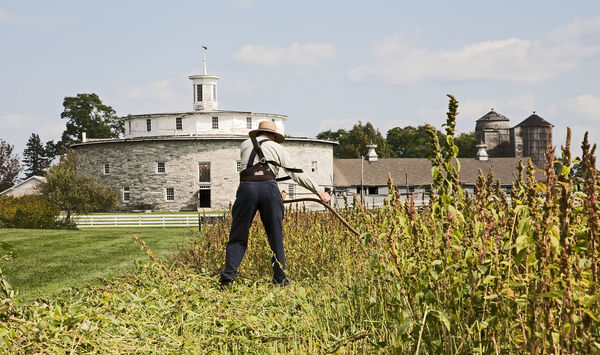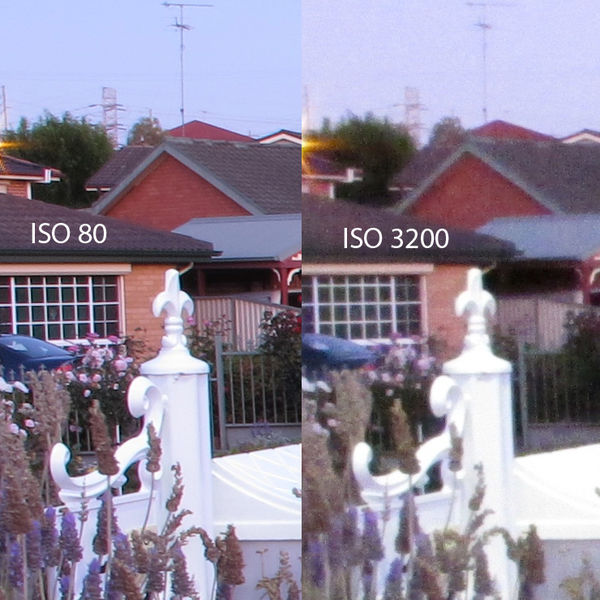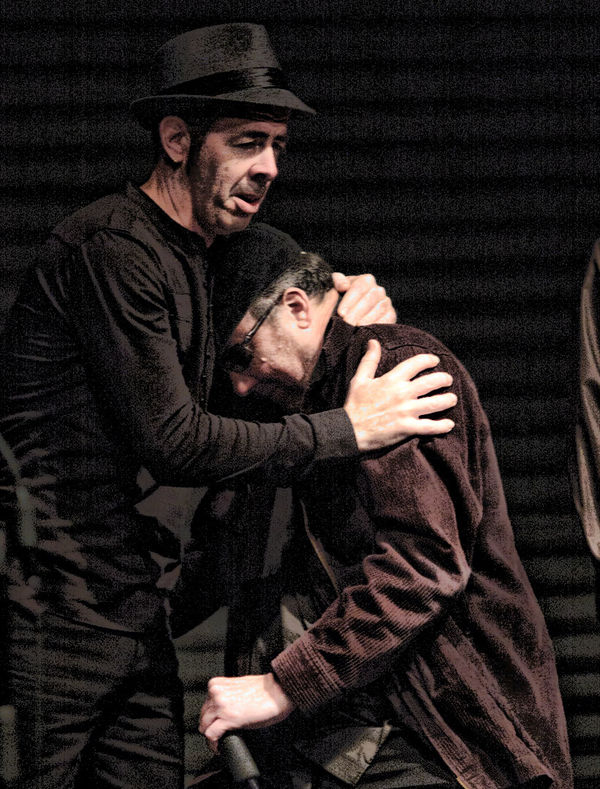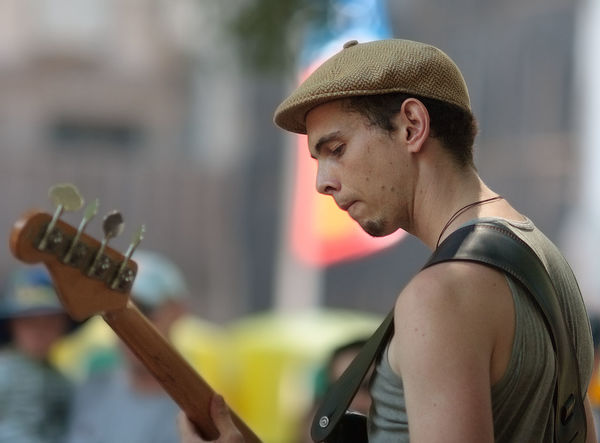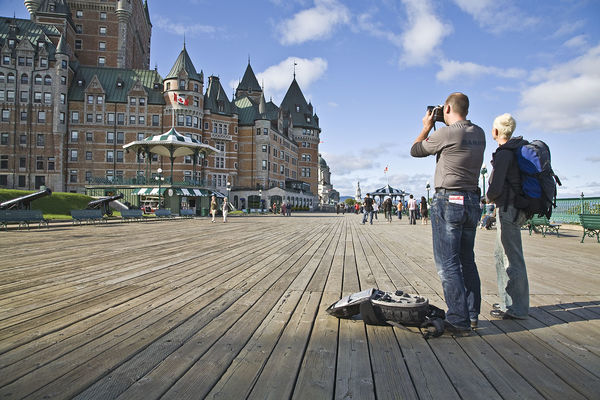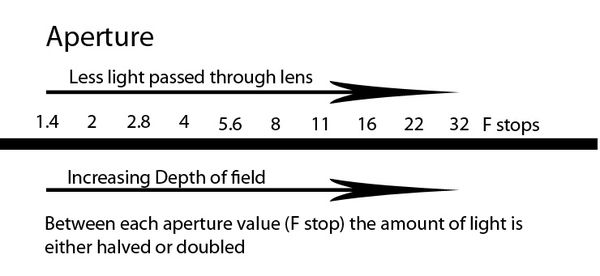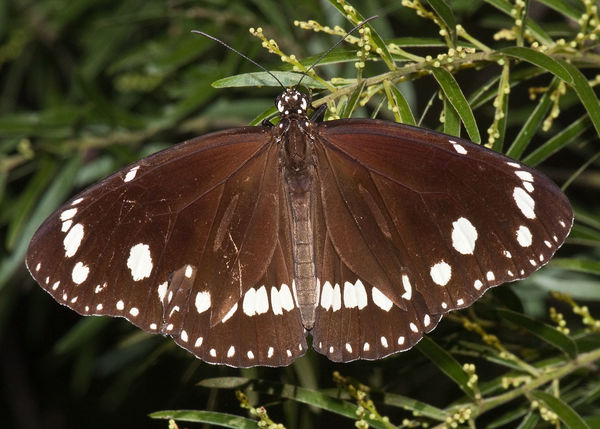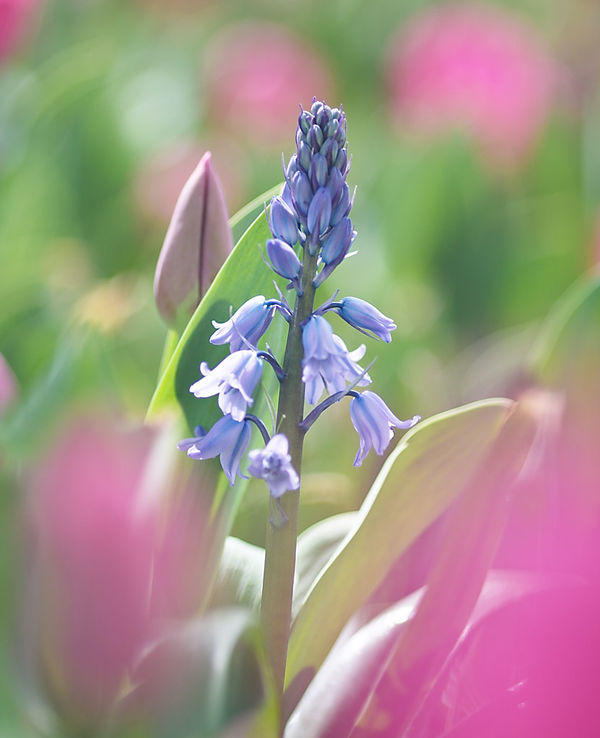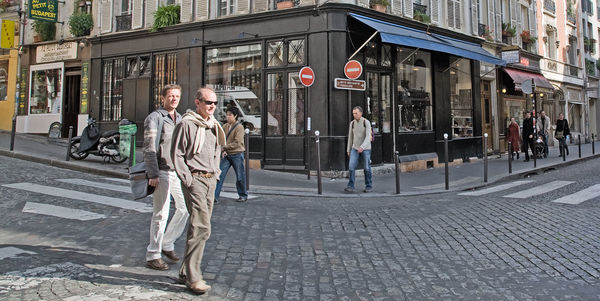For beginers - Introduction to exposure
Jan 13, 2019 02:06:32 #
This is a modified thread of mine (multiple posts) from a long defunct photography forum.
A balancing act.
When you take a photograph the camera collects light to turn it into an image.
How much light it needs to collect is determined by the cameras sensitivity (ISO). Higher ISO values means the camera is more sensitive.
How much light it collects is determined by:
(1) How long it collects light for (time) and is determined by the shutter speed (in seconds).
Plus
(2) How much light the lens will let in which is determined by the aperture (size of the hole) in the lens. Aperture is expressed in F stops (numbers) and as it is a ratio it may be a bit confusing. Low F numbers let in a lot of light, increasing the F number stops more light.
When everything is in balance, and the sensor collects the correct amount of light, the picture is "correctly" exposed, as per the example below.
Lots more to come, over the next few days, and feel free to contribute and/or ask questions.
A balancing act.
When you take a photograph the camera collects light to turn it into an image.
How much light it needs to collect is determined by the cameras sensitivity (ISO). Higher ISO values means the camera is more sensitive.
How much light it collects is determined by:
(1) How long it collects light for (time) and is determined by the shutter speed (in seconds).
Plus
(2) How much light the lens will let in which is determined by the aperture (size of the hole) in the lens. Aperture is expressed in F stops (numbers) and as it is a ratio it may be a bit confusing. Low F numbers let in a lot of light, increasing the F number stops more light.
When everything is in balance, and the sensor collects the correct amount of light, the picture is "correctly" exposed, as per the example below.
Lots more to come, over the next few days, and feel free to contribute and/or ask questions.
Jan 13, 2019 02:14:48 #
When the sensor collects too much light (either because the shutter speed was too long and/or the aperture was letting in too much light - low F number) the picture is said to be over exposed and will look too bright - washed out.
Conversely under exposure means the picture is too dark and is caused by the sensor not collecting enough light, either because the shutter speed was too short and/or the aperture was not letting in enough light - high F number)
If the picture is "blurry" it may be due to the exposure being too long and the camera was moved or the subject was moved.
Here is an example where the bird is moving too fast for the shutter speed and the camera is being moved as well, notice the streaks on the water.
It was shot at a shutter speed of 1/15 second.
More to come and feel free to contribute and/or ask questions.
.
Conversely under exposure means the picture is too dark and is caused by the sensor not collecting enough light, either because the shutter speed was too short and/or the aperture was not letting in enough light - high F number)
If the picture is "blurry" it may be due to the exposure being too long and the camera was moved or the subject was moved.
Here is an example where the bird is moving too fast for the shutter speed and the camera is being moved as well, notice the streaks on the water.
It was shot at a shutter speed of 1/15 second.
More to come and feel free to contribute and/or ask questions.
.
Jan 13, 2019 02:28:33 #
When a camera is used in "Auto" or a "scene mode" it will look at the scene and determine the sensitivity (ISO) the shutter speed and the aperture to attempt to expose the picture correctly. For a lot of straight forward scenes it will be fine.
Example (I vary rarely use auto, however this will give you an idea)
Camera Canon EOS 5D
Exposure 0.008 sec (1/125)
Aperture f/14
Focal Length 80 mm
ISO Speed 200
When a camera is in P (program mode) it will set the exposure however you may vary the suggested settings and select the sensitivity (ISO) at least.
With other modes like aperture priory/shutter priority you have even more control and in manual mode you have total control.
The main thing to remember it is a "balancing act".
ISO, shutter speed and aperture all work together and normally if you change one you change the other.
There are two other elements of exposure and that is focussing and "white balance" where the lighting type (Sunny/shade/indoor/flash/etc) is taken care of.
Keep in mind some exposure settings may be an "artistic" decision.
.
More to come (in about 12 hours).
Example (I vary rarely use auto, however this will give you an idea)
Camera Canon EOS 5D
Exposure 0.008 sec (1/125)
Aperture f/14
Focal Length 80 mm
ISO Speed 200
When a camera is in P (program mode) it will set the exposure however you may vary the suggested settings and select the sensitivity (ISO) at least.
With other modes like aperture priory/shutter priority you have even more control and in manual mode you have total control.
The main thing to remember it is a "balancing act".
ISO, shutter speed and aperture all work together and normally if you change one you change the other.
There are two other elements of exposure and that is focussing and "white balance" where the lighting type (Sunny/shade/indoor/flash/etc) is taken care of.
Keep in mind some exposure settings may be an "artistic" decision.
.
More to come (in about 12 hours).
Jan 13, 2019 05:41:45 #
Seems to me that could benefit many people. It would certainly have benefited me in my earlier days.
Jan 13, 2019 06:48:30 #
This is a good condensation of the basics. To my mind "exposure" is about capturing light, where both quantity and quality are issues, so I would agree about including white balance, but to my mind focus is another issue which should be treated separately and should include a discussion of DOF and choice of focus point.
Jan 13, 2019 08:29:12 #
Thank you for posting this, Richard. Anyone who spends a lot of time in main discussion forum knows how often folks post exposure questions that reveal they are trying to jump into the deep end of the pool without bothering to learn to swim 

Jan 13, 2019 12:43:54 #
Jan 13, 2019 12:48:07 #
ISO
ISO is the sensitivity setting for the camera. The higher the ISO the more sensitive the camera is to light allowing you to;
(1) shoot with less light,
and/or
(2) Shoot with a faster shutter speed to reduce camera and subject motion,
and/or
(3) Shoot with a smaller aperture (higher F number) to give you deeper zone of sharpness in your photograph, ie Depth of Field (more to come on this).
The main downside with shooting at high ISO is that the pictures become noisy, ie "gritty", and may become soft if the camera applies noise reduction.
Here is an example of ISO 80 and ISO 3200 straight out of a point & shoot camera (Canon G11). (100% crops)
ISO is the sensitivity setting for the camera. The higher the ISO the more sensitive the camera is to light allowing you to;
(1) shoot with less light,
and/or
(2) Shoot with a faster shutter speed to reduce camera and subject motion,
and/or
(3) Shoot with a smaller aperture (higher F number) to give you deeper zone of sharpness in your photograph, ie Depth of Field (more to come on this).
The main downside with shooting at high ISO is that the pictures become noisy, ie "gritty", and may become soft if the camera applies noise reduction.
Here is an example of ISO 80 and ISO 3200 straight out of a point & shoot camera (Canon G11). (100% crops)
Jan 13, 2019 12:55:55 #
However whilst I prefer to use the lowest native ISO, if need be I will use what ever ISO is needed to achieve a reasonable photograph.
I feel it is better to have a noisy image rather than an underexposed or blurred image. Here is an example at ISO 3200 on a DSLR and selective noise reduction, and sharpening, applied when I was post processing the RAW file (ie the camera did not apply any unwanted processing to my picture)
Camera Canon EOS 40D (a 2008 DSLR)
Exposure 0.005 sec (1/200)
Aperture f/2.0
Focal Length 135 mm
ISO Speed 3200
Exposure Bias 0 EV
Flash Off, Did not fire
Notice the grain.
From personal experience newer cameras have much better high ISO performance than "similar" cameras of old and for a few (ISO invariant) not much "practical change" regardless of the ISO used.
.
I feel it is better to have a noisy image rather than an underexposed or blurred image. Here is an example at ISO 3200 on a DSLR and selective noise reduction, and sharpening, applied when I was post processing the RAW file (ie the camera did not apply any unwanted processing to my picture)
Camera Canon EOS 40D (a 2008 DSLR)
Exposure 0.005 sec (1/200)
Aperture f/2.0
Focal Length 135 mm
ISO Speed 3200
Exposure Bias 0 EV
Flash Off, Did not fire
Notice the grain.
From personal experience newer cameras have much better high ISO performance than "similar" cameras of old and for a few (ISO invariant) not much "practical change" regardless of the ISO used.
.
Jan 13, 2019 13:03:17 #
Introduction to Aperture.
Beside controlling the amount of light through the lens the aperture also controls the zone of sharpness, depth of field (DOF) in the photograph. DOF is also dependant on shooting distance to the subject, and lens focal length (eg wide angle, normal or telephoto).
The wider the aperture (smaller F numbers) the less DOF.
The smaller the aperture (large F numbers) the more DOF.
#3 An example of shallow DOF. Notice only the man's head is sharp.
Camera Canon EOS 40D
Exposure 0.001 sec (1/1000)
Aperture f/2.0
Focal Length 135 mm
ISO Speed 400
Exposure Bias 0 EV
Flash Off, Did not fire
Subject Distance 5.8 m (~18 feet)
.
Beside controlling the amount of light through the lens the aperture also controls the zone of sharpness, depth of field (DOF) in the photograph. DOF is also dependant on shooting distance to the subject, and lens focal length (eg wide angle, normal or telephoto).
The wider the aperture (smaller F numbers) the less DOF.
The smaller the aperture (large F numbers) the more DOF.
#3 An example of shallow DOF. Notice only the man's head is sharp.
Camera Canon EOS 40D
Exposure 0.001 sec (1/1000)
Aperture f/2.0
Focal Length 135 mm
ISO Speed 400
Exposure Bias 0 EV
Flash Off, Did not fire
Subject Distance 5.8 m (~18 feet)
.
Jan 13, 2019 13:06:44 #
An example of a lot of DOF.
Camera Canon EOS 5D
Exposure 0.008 sec (1/125)
Aperture f/10
Focal Length 24 mm
ISO Speed 100
Exposure Bias 0 EV
The main thing to remember it is a "balancing act".
ISO, shutter speed and aperture all work together and normally if you change one you change the other.
.
Camera Canon EOS 5D
Exposure 0.008 sec (1/125)
Aperture f/10
Focal Length 24 mm
ISO Speed 100
Exposure Bias 0 EV
The main thing to remember it is a "balancing act".
ISO, shutter speed and aperture all work together and normally if you change one you change the other.
.
Jan 13, 2019 13:14:47 #
Aperture.
Just to recap;
Beside controlling the amount of light through the lens the aperture also controls the zone of sharpness, depth of field (DOF) in the photograph. DOF is also dependent on shooting distance to the subject, and lens focal length (eg wide angle, normal or telephoto).
Apertures are known as F numbers
The wider the aperture (smaller F numbers) the less DOF.
The smaller the aperture (large F numbers) the more DOF.
.
Just to recap;
Beside controlling the amount of light through the lens the aperture also controls the zone of sharpness, depth of field (DOF) in the photograph. DOF is also dependent on shooting distance to the subject, and lens focal length (eg wide angle, normal or telephoto).
Apertures are known as F numbers
The wider the aperture (smaller F numbers) the less DOF.
The smaller the aperture (large F numbers) the more DOF.
.
Jan 13, 2019 13:19:03 #
Just a note on lenses.
When you look at a lens you will see numbers like.
50mm 1.8
This is a single focal length or prime lens of a maximum aperture of F1:1.8
or
24-104mm F1:4
This is a zoom lens with a maximum aperture of F4 at all focal lengths
or
75-300mm 1:4.5-5.6
This is a zoom lens with a maximum aperture of F4.5 at 75mm and F5.6 at 300mm.
The minimum aperture is lens dependant.
---------------------------------------
What aperture to use?
Besides balancing exposure my main consideration is what depth of field do I want.
If I want lots of DOF then I will use a small aperture.
Here lots is relative. I am shooting with along lens, at a very short distance. so my DOF is is approx 1/2" or 12mm
Butterfly on wattle tree.
Camera Canon EOS 40D
Exposure 0.004 sec (1/250)
Aperture f/25.0
Focal Length 375 mm
ISO Speed 400
Exposure Bias 0 EV
Flash On, Fired
Exposure Program Manual
Subject Distance 1.87 m (approx 6 feet)
.
When you look at a lens you will see numbers like.
50mm 1.8
This is a single focal length or prime lens of a maximum aperture of F1:1.8
or
24-104mm F1:4
This is a zoom lens with a maximum aperture of F4 at all focal lengths
or
75-300mm 1:4.5-5.6
This is a zoom lens with a maximum aperture of F4.5 at 75mm and F5.6 at 300mm.
The minimum aperture is lens dependant.
---------------------------------------
What aperture to use?
Besides balancing exposure my main consideration is what depth of field do I want.
If I want lots of DOF then I will use a small aperture.
Here lots is relative. I am shooting with along lens, at a very short distance. so my DOF is is approx 1/2" or 12mm
Butterfly on wattle tree.
Camera Canon EOS 40D
Exposure 0.004 sec (1/250)
Aperture f/25.0
Focal Length 375 mm
ISO Speed 400
Exposure Bias 0 EV
Flash On, Fired
Exposure Program Manual
Subject Distance 1.87 m (approx 6 feet)
.
Jan 13, 2019 13:24:39 #
Do I want supper shallow DOF to blur out the background and blur out any foreground.
Camera Canon EOS 40D
Exposure 0.001 sec (1/1250)
Aperture f/2.0
Focal Length 135 mm
ISO Speed 100
Exposure Bias 0 EV
Flash Off, Did not fire
Exposure Program Aperture-priority AE
Subject Distance 1.71 m (5.6 feet)
.
Camera Canon EOS 40D
Exposure 0.001 sec (1/1250)
Aperture f/2.0
Focal Length 135 mm
ISO Speed 100
Exposure Bias 0 EV
Flash Off, Did not fire
Exposure Program Aperture-priority AE
Subject Distance 1.71 m (5.6 feet)
.
Jan 13, 2019 13:30:49 #
Do I want a "general purpose" DOF for those grab shots.
This was whist on vacation and when just walking around I find an aperture of F8-F11 meets my needs when extremes of DOF don't really matter
Camera Canon EOS 5D
Exposure 0.006 sec (1/160)
Aperture f/11
Focal Length 24 mm
ISO Speed 400
Exposure Bias -1 EV
Flash Flash did not fire
The main thing to remember it is a "balancing act".
ISO, shutter speed and aperture all work together and normally if you change one you change the other.
More to come (in a few hours). Feel free to contribute and/or ask questions.
.
This was whist on vacation and when just walking around I find an aperture of F8-F11 meets my needs when extremes of DOF don't really matter
Camera Canon EOS 5D
Exposure 0.006 sec (1/160)
Aperture f/11
Focal Length 24 mm
ISO Speed 400
Exposure Bias -1 EV
Flash Flash did not fire
The main thing to remember it is a "balancing act".
ISO, shutter speed and aperture all work together and normally if you change one you change the other.
More to come (in a few hours). Feel free to contribute and/or ask questions.
.
If you want to reply, then register here. Registration is free and your account is created instantly, so you can post right away.

